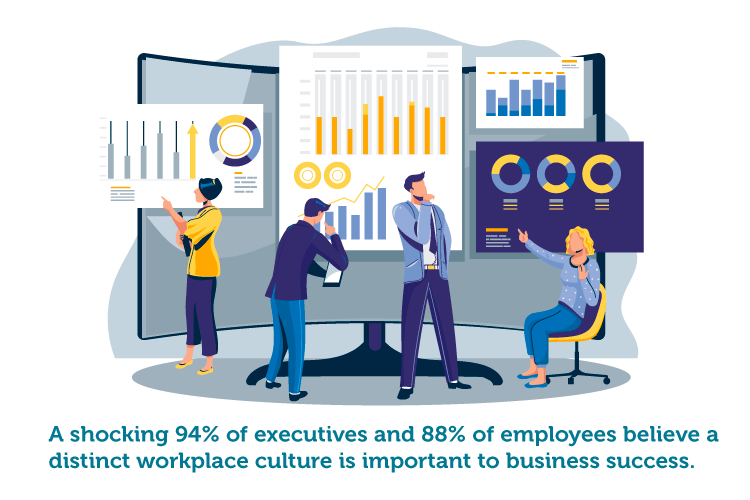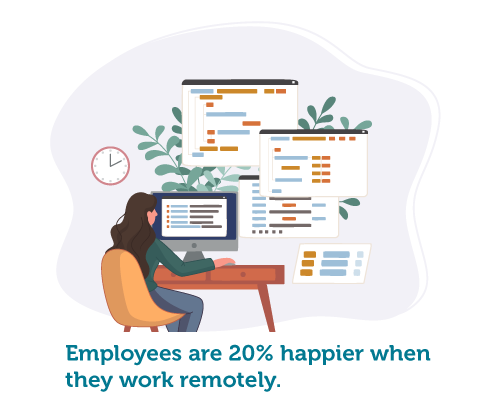
Forma – Meet a Vendor
Forma is the leading platform for LSAs and flexible benefits, enabling employers to deliver personalized benefits for employees, increase administrative efficiency, and optimize benefits budgets.


Managing Partner at MASC Medical

Digital Marketing Manager of Explainerd

PR & Branding Manager at SBO

Senior Travel Editor at Travelness

Founder & Director of Verballistics

SEO Executive at Digital Funnel

CMO at Offices.net

Co-Founder of Milkwhale

CEO and Founder of Breadnbeyond
One-third of our lives is spent at work. Yet, only a rare few are content, and even less, enjoy the workplace. Our jobs become a daily game of avoiding unpleasant coworkers, bad managers, or getting involved in workplace events.
We daydream of our next vacation, running away to another career, or even retiring.
However, as today’s context of the workplace and the worker-employer relationship is shifting, organizations have the opportunity to create the conditions of a flourishing and balanced environment. An organization can’t thrive without its employees, and leaders notice that happiness ultimately translates into an instrumental factor for business success.
But if you think a ping-pong table and massage chairs will make employees find long-lasting fulfillment at work, think again.
This special report explores how to be happy at work and why happiness is a crucial business driver we should all care about.
Companies have experienced much turmoil in the last several years, from significant economic changes to labor shortages, followed by the “Great Resignation.” All of these events indicated a growing need to address employees’ needs. The most important message for leaders is that it’s time to step up their game and find innovative ways to redefine workplace wellness and give mental health support.
While the importance of wellbeing programs is universally acknowledged in the corporate world, employers today highlight another critical component of a holistic strategy – happiness management.
When did the concept of happiness enter the workplace?
Does it even matter if people are happy at work?
Good health goes hand-in-hand with happiness. As Marc Adam, Managing Partner of MASC Medical points out, “COVID-19 has changed the way people think about work. The Great Resignation has shown us that people aren’t afraid to quit their jobs. People want to be happy at work. They want to feel a sense of inclusion, appreciation, and inspiration.
As an employer, we believe that everyone should be happy at work. We understand that people are automatically more productive, resilient, and successful when they are happy.”

More than 70% of employees say that their work defines their sense of purpose. Companies and leaders greatly influence the individual purpose and sense of fulfilment. As a result, the employee experience has gained increased traction in corporate circles as an answer to how to be happy at work.
Employers have a huge role in developing employees’ relationships with their job.
One of the greatest obstacles to achieving happiness is the significant impact work has on our stress levels and mental health. Organizations that understand the link between worker happiness and organizational performance can help their employees manage stress and find work-life balance.
Natasha Rei, Digital Marketing Manager of Explainerd, affirms this by stating, “You can be happy at work when you find a job that you enjoy and allows you to take time for yourself during the day while also maintaining a positive working environment with colleagues. Make sure to have a good work-life balance, make time for friends and family, and find ways to relax outside work. “
While the relationship between work and happiness isn’t new, many companies still underestimate just how crucial it is in the workplace. Or even worse, try to force happiness in the workplace.
Far too often, we hear of organizations being tone-deaf, trying to generate happiness by holding “hype” meetings, and pushing toxic positivity in the workplace. However, in most cases, this approach backfires and only alienates employees more.
Being happy at work, similar to discontent, has a contagious multiplying effect that can impact our wider surroundings.

It’s well-established that happiness is good for your health. In fact, happier individuals have better health, fewer heart problems, better immune systems, and lead longer lives.
But are happier employees better employees?
Surprisingly, a growing body of research shows that by cultivating happiness, companies can address some of the most common employee challenges like stress, physical and mental health, disengagement, absenteeism, and incivility in the workplace.
Let’s look at the statistics on happiness in the workplace.
We find that organizations with many happy employees have three times the revenue growth, outperform competitors, and have half the turnover rate compared to companies with unhappy employees. On the other hand, a lack of happiness at work spills over into motivation, productivity, and innovation issues.
Clearly, there are numerous individual, social, and organizational benefits. When employees are happy, the enterprise also flourishes. Although many people would dismiss the importance of being happy at work, we find that happiness is the key to solving some of the biggest problems of the modern workplace.
Job satisfaction and employee engagement have been around for a while. Still, it is hard to understand how happiness is linked to job satisfaction, joy, and engagement.
The easiest way to describe the difference between the two concepts is that job satisfaction is based on reason, while happiness comes from our feelings and is a much deeper feeling of fulfillment.
Mario Cacciottolo, PR & Branding Manager at SBO, comments,

The top factors that influence job and career satisfaction are:
While the top factors for employee happiness are:
Fred Baker, Senior Travel Editor at Travelness, shared the top factors for employee happiness: a sense of work purpose, good pay, and supportive colleagues.
When they think their work matters, people are happiest at work. They don’t have to be aware of the exact outcomes of their efforts, but they should feel as though they are making a real difference and helping others. This level of job satisfaction requires purposeful attention and care from top management; it does not occur by accident. Employees also want opportunities to develop their skills and advance their careers. Recognition and rewards are critical in this regard.
Even with a sense of purpose, people aren’t happy if their income isn’t adequate. Compensation is only part of the picture, however. People also need clear expectations of their jobs and fair treatment, as well as the freedom and autonomy to perform their best.
Human beings are social creatures. We thrive in groups, and we suffer when we feel isolated. If you’re unhappy at work, chances are your coworkers’ moods are suffering too. Encourage good behavior among your peers and actively seek support rather than isolation.
Happiness starts from within – and in the business context, that starts with culture.
A shocking 94% of executives and 88% of employees surveyed by Deloitte believe a distinct workplace culture is important to business success. And yet only 19% of executives think their company has the “right culture.” The value of an engaged and meaningful company culture can’t be overstated, especially in today’s hyper-competitive business environment.
Creating a work culture that promotes employee happiness isn’t only the right thing to do; it’s good for business too.
For example, a great customer experience drives business growth and success. Still, many companies fail to acknowledge that the people delivering the customer experience – the employees – must come first. As a result, happiness is part of an organization’s corporate social responsibility.
So, in case you might be wondering, are employers responsible for employees’ happiness?
The simple answer is – no.
But do they benefit from it?
Yes!
Below are some examples which help organizations generate happiness:
Gina Balarin, Founder and Director of Verballistics, gave an insightful response on how to be happy at work by quoting Dan Pink’s book Drive.
Gina says, “Being happy at work comes down to three things: autonomy, mastery, and purpose.
When we have enough autonomy (i.e., the ability to do things independently – without micro-management) at work, we can bring our creativity, passion, and ingenuity to the role. Without it, we suffer from boredom, lethargy, and frustration.
If we are able to drive ourselves to improve what we do, how we do it, or feel like we’re making something better, we have control over our actions and can learn and grow in our role and as a person.
Lastly, every employee needs to know why what they do matters. The purpose isn’t just a nice-to-have; it’s critical to human happiness and wellbeing. Even the poorest paid employees can enjoy their work if they know they’re contributing towards something meaningful.”

So how to enjoy work?
The following are a few examples of how to be happy at work:
Throughout the pandemic, most of us were forced to start working remotely.
While some workers disliked blurring the work-life boundary, many reported increased job happiness and productivity. Turns out that remote work has some happiness benefits, and work arrangements play a significant role in employee wellbeing.
Research shows that employees are 20% happier when they work remotely. Returning to the office comes with increased financial concerns regarding commuting and child care for people living in congested cities.
However, it is also true that work is where many people have most of their social interactions and digital technology is not a substitute for human connection. One study showed that work friendships are critical for long-term happiness and the most crucial element of happy work life.
SEO Executive Dylan Thebault shared their experience with flexible work arrangements. Dylan says, “At Digital Funnel, a digital marketing agency, we encourage a hybrid work model, allowing for a better work-life balance.
Our employees enjoy many forms of exercise and usually go to the gym, run or walk at lunchtime when working from home. It tends to give employees a morale and productivity boost in the afternoon.
On top of this, our employees have the option to start an hour earlier in the summer months, allowing them to enjoy more downtime in the evenings. Being finished with work at 4.30 PM can be a blessing when the sun is shining.”
Teresha Aird, CMO at Offices.net, further affirms this sentiment by stating, “As a 20+ year veteran business leader, I have picked up a lot of tips and tricks for managing employees to ensure that they’re happy at work.
Currently, I believe that the most important thing that employees need to be happy is the trust and faith from management that enables them to work remotely. Having the ability to work remote, whether that be in a full-time capacity or as part of a hybrid working model, provides employees with the flexibility to center their work around important family and life commitments – rather than living the other way around.”

Retaining a positive and inspiring attitude while working a stressful job is difficult.
In fact, being always happy at any job sounds exhausting and emotionally draining. Work – like any other aspect of life – is bound to have highs and lows that make us feel a wide range of emotions.
Even though work is stressful, it doesn’t mean that happiness can’t be attained.
Ebnu Sudarso, Co-Founder of Milkwhale, shared how to be happy at work despite challenges, “Being happy at work is something many individuals struggle with. Sometimes there are good days, then there are bad days. If you’re lucky, you might actually find joy in what you’re doing but for those who find their work challenging, this advice might be for you.
A good way to be happy at work is to find purpose. By having a purpose, you’ll have goals and targets to work towards. Once you achieve those goals, you’ll feel a sense of joy and accomplishment which in time will help you be happier at work.”
The same sentiment is reflected by Andre Oentoro, CEO and Founder of Breadnbeyond. Andre says, “A key to being happy at work is to find something you enjoy in what you do. Of course, no job is perfect– there will always be ups and downs. But, it’s important to find something you’re passionate about and look forward to doing each day.
If you love your job, it will show in your attitude and performance. Passion is contagious, and if you’re passionate about your work, those around you will be infected with your enthusiasm.”
You might be wondering, which jobs are the happiest?
One research found that white-collar jobs typically report experiencing more positive emotions such as smiling, enjoyment, and laughing and fewer negative ones like feelings of stress, sadness, and anger.
On the other hand, blue-collar employees report lower happiness levels almost everywhere in the world. Most commonly, this is noted in labor-intensive industries like mining, construction, transport, farming, and manufacturing. Similar levels of negativity are also reported for those who are self-employed. Turns out that being your own boss is just as rewarding as stressful.
Many people would answer that having no job would make them the happiest. But is that really the case?
One of the most shocking findings in the science of happiness is that unemployment harms people’s wellbeing. On average, employed people evaluate the quality of their lives significantly higher than those unemployed.
In fact, unemployed people report 30% more negative emotions in their day-to-day lives.
What’s more, getting the unemployed back to work is more beneficial to people’s wellbeing and happiness than simply compensating them for doing nothing. This is mainly because people typically do not adapt to unemployment over time. In fact, joblessness seems to have a long-term damaging effect on people’s happiness, even after they’ve found a job.
The importance of being employed extends beyond the salary and financial gains attached to it. Undoubtedly, the non-monetary rewards of employment are vital drivers of people’s wellness. Social connections, societal status, daily structure, employee recognition, and working towards a goal affect people’s happiness.
What’s fascinating is that research shows unemployment does not affect us only on a personal level but also on a societal level. Studies have shown that on a macro-level elevated unemployment rate affects the happiness levels of the entire society, even if all other factors remain the same.
Happiness at the workplace doesn’t mean that you will have a problem-free workplace. But it means that employees can face problems better and resolve them faster when they know how to be happy at work. Clearly, having happy employees is not just a nice bonus but a necessity for every successful workplace.
Browse our curated list of vendors to find the best solution for your needs.
Subscribe to our newsletter for the latest trends, expert tips, and workplace insights!

Forma is the leading platform for LSAs and flexible benefits, enabling employers to deliver personalized benefits for employees, increase administrative efficiency, and optimize benefits budgets.

Explore the perks and potential concerns of payroll tax holiday and their significance for workers and companies.

Benepass is a forward-thinking, customizable, and financially driven spending accounts platform that is centered around the value of personalized benefits.

Sword offers the most clinical-grade, virtual Physical Therapy program to your people who suffer with MSK or pelvic health pain.
Used by most of the top employee benefits consultants in the US, Shortlister is where you can find, research and select HR and benefits vendors for your clients.
Shortlister helps you reach your ideal prospects. Claim your free account to control your message and receive employer, consultant and health plan leads.